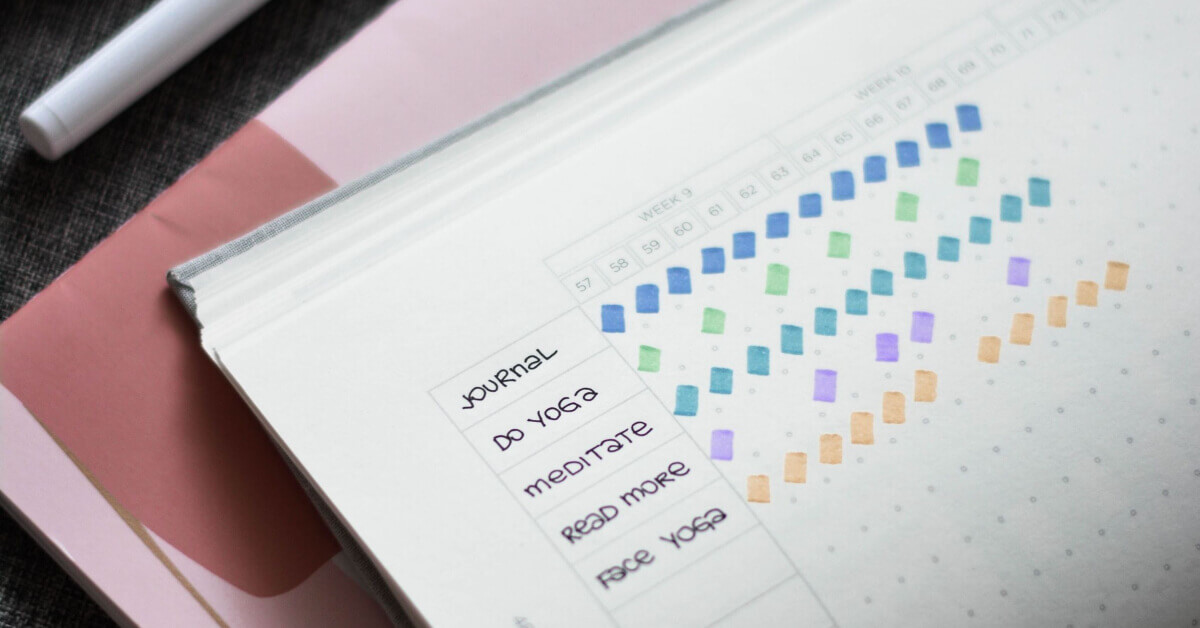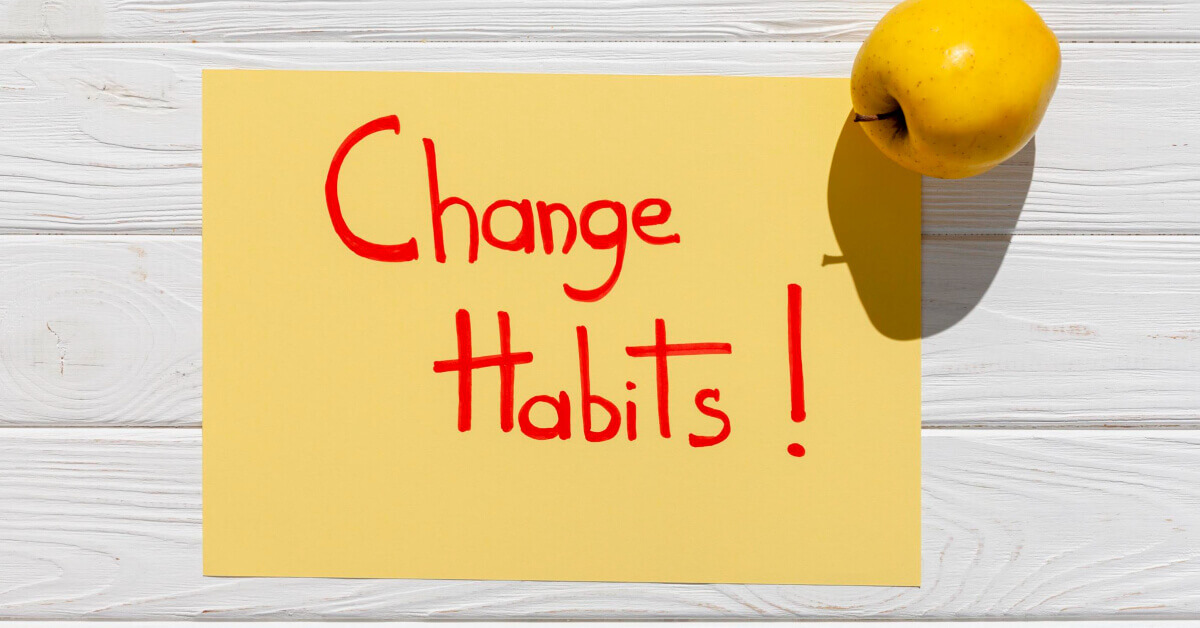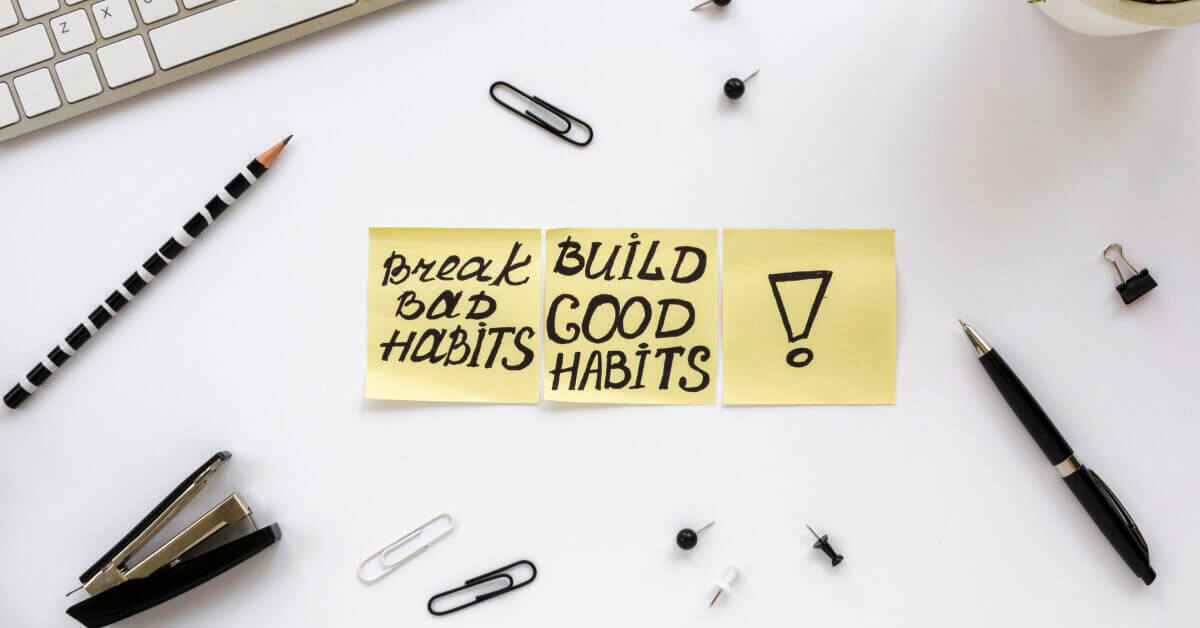Mindset
5 Ways You Waste Time Every Day

Do you find yourself at the end of a day wondering just what you have managed to accomplish? Are you wasting valuable time each day?
If the answer is yes, check out the most common five ways you waste time every day. Be honest, do you find yourself doing any of them?
I’m sure you will be guilty of at least one of them as modern life is so full of things that can distract us from getting things done.
If that sounds a bit like you then this post will hopefully help you to become more productive each and every day by becoming aware of these distractions and time sinks and managing to avoid them to get stuff done.
You’ll also find some handy time management strategies in here too.
They can help you become more efficient and productive and be able to get the most out of your day.
Are you ready? Let’s get started…
5 Of The Biggest Timewasters Of Your Day

Even if you’re one of the more dedicated and organized people out there, you still waste time. Whether you work from home or in the office, we’re all guilty of getting distracted and losing focus.
It may not be deliberate, and you probably don’t even realize you’re doing it until it’s too late.
Here are five ways you waste time every day. See if you can relate.
1. Social Media/Emails/Texts

This is the big one and I can pretty much guarantee that everyone reading this post is or has been guilty of this one!
It’s become a vital part of our lives. But the world won’t stop turning if you don’t look at your social media for 15 minutes.
Picture this scenario: you’re in the middle of work when your phone beeps. You reach for your phone to see your incoming message. So, you go from message to email to Facebook to Instagram. Then, when you’re done, you notice that 20 minutes have gone by.
Research shows that each time you get distracted, even for a couple of minutes, your brain needs more than 20 minutes to refocus. Imagine how much wasted time that amounts to at the end of the day!
The Fix: Avoid randomly checking social media, emails, or texts. Instead, set up a certain time during your day for doing just that. In the meantime, turn off any notifications or mute your phone.
2. Organizing And Preparing

You’re probably wondering: how is this a time-waster?
The Fix: Find an online planner and to-do-list. Then, pick one day out of the week where you plan out the whole seven days in advance.
Schedule in work-related projects, meetings, and deadlines. You can also include a workout schedule and get-togethers with friends.
3. Multitasking

Multitasking: another thing that we do to trick ourselves into believing we’re being productive. Yet, the sad truth is, multitasking wastes a ton of time.
The Fix: It’s simple. Just put all your attention and focus on one task at a time. When you’re done, move on to the next task, and so on.
4. Checking The News

In this day and age, it seems something is happening in the news every five minutes. So, it’s easy to use the news as an excuse for procrastination. After all, we all want to be in the loop when it comes to politics, sports, and local news.
One great example is the Stay Focused Chrome app. It helps you ‘hide’ certain websites for, say, 45 minutes. Then, tell the app you want to spend 20 minutes on the so-and-so website. After the 20 minutes are done, the app will block you again until your next break.
5. Errands And Chores

The problem isn’t with the errands or chores themselves; it’s when you do them. Running errands during rush hour is one of the biggest time wasters ever!
Doing chores is another. You might be sitting at your desk, working away when you notice a dusty shelf or a cluttered drawer. So, you do the responsible thing and start dusting and decluttering.
The Fix: Plan your errands ahead when you know there’ll be less traffic. Also, try to do your shopping when you know the stores won’t be as crowded and they’re in their least peak hours.
As for chores, set up one or two days during the week when you do all the dusting, cleaning, and decluttering. This way, even if you see catches your attention, you can push back in your mind and wait until ‘chore day’ rolls around.
A Final Note
We all get the same amount of time each day: 86,2400 seconds, 1,440 minutes, or 24 hours. It’s up to you to figure out how you’re going to spend that time. Sadly, many of us spend our days doing things that don’t really add any value to our lives—or anyone else’s for that matter.
OK, there are 5 ways you are wasting time every day. If you want to learn more time management strategies to make you more productive, then click on the featured resource below to download a free report that you can read at your leisure. Download, read it and take action 🙂

How To Beat Procrastination And Get Writing
 The American author, Joseph Heller, once said, “Every writer I know has trouble writing.”
The American author, Joseph Heller, once said, “Every writer I know has trouble writing.”
And he’s not the only one who has alluded to the difficulty of writing.
Stephen King’s quote, “Amateurs sit and wait for inspiration, the rest of us just get up and go to work.” – reinforces the same point.
Writing is hard work. It just is.
Even if you’re a good writer with a flair for the art, the act of putting pen to paper (or keyboard to screen) is almost always met with some internal resistance.
In fact, Steven Pressfield, wrote an entire book on it and called it ‘The War of Art’.
And it really is a war.
The anticipation of writing has struck fear in many a budding writer’s heart and caused them to procrastinate into eternity.
The road to publishing success is littered with the dusty skeletons of many wannabe writers who abandoned their writing halfway… and even more who never got started.
All due to procrastination.
The key to overcoming procrastination and getting your writing done will come down to you applying a few simple techniques.
1. Make It A Habit

The importance of a daily routine cannot be overstated. You have to make writing a habit.
What does that mean?
It means you have to spend some time writing every single day. You should also aim to make it the same time daily.
For example, sitting down at the same desk at the same place, every single day at 9 AM to write.
But should you write on weekends?
Only you can answer this question. If you face immense resistance within yourself before you can write, that means the procrastination force is strong with you – and not in a good way.
It would be wise to write on weekends too, but for a shorter duration so that inertia/resistance never gets a chance to build up, and you also have more time to rest. Even 20-30 minutes of writing will do.
It’s the habit you’re focusing on. An object in motion stays in motion. An object at rest stays at rest – and procrastinates while at rest.
2. Write In Blocks

How much you can write and how long you can write will depend on your typing/writing speed and your writing ‘stamina’. An experienced writer may be able to write for 4 hours at a go without any breaks.
For example, you may write from 9-11 AM and take a break for an hour and write again from 12-2 PM. In this way, you’d get 4 hours of writing done.
Depending on your writing stamina, initially you may wish to go with 30-minute writing sprints, followed by a 15-minute break and then another 30 minutes and so on. You could use a Pomodoro timer to help you.
There’s no right or wrong answer here. As long as you’re striving to build your writing stamina, you’re on the ‘write’ track. Pun fully intended.
3. Batch Similar Tasks Together

Planning, researching, outlining, writing and editing are 5 DIFFERENT tasks. Never try to do them all at the same time. This will not only tire you out but is also very time-consuming and unproductive.
Batching your tasks means getting similar tasks done at once. This not only simplifies the process but helps to accelerate it while increasing your output. It’s a win-win-win situation.
For example, if your goal is to write 10 articles on gardening, your first task will be to decide what topics you’ll cover.
Then you’ll need to do your research for ALL 10 articles.
When all that’s done, now you’re ready to start writing… and keep writing without editing.
Always remember the quote, “Write drunk. Edit sober”.
Once you’ve written all 10 articles, you can edit them individually. By batching your tasks in this way, you’ll save time and your writing process will not be a disjointed and discombobulated one.
4. Focus On Quality, Not Perfection

Avoid perfectionism at all cost. It’s not natural, and nothing is ever perfect. The goal is to aim for excellence. Write quality content that you can be proud of.
Do not focus on the quantity of the content. This is an unreliable metric to rely on.
You may notice that on some days, all you may manage is 5 pages in 2 hours. Yet, your writing for these 5 pages may be far superior than the 15 pages you wrote another day.
Good writing takes time. Quality and quantity are two different metrics.
Your goal is to write content that informs and moves your readers – and you want to do so in as few words as possible. That’s real skill and a sign of good writing.
Focus on quality and forget about quantity. You’re not planting rice here.
5. Use The Two-Minute Rule

This rule was first mentioned by author, David Allen, and it’s a very powerful technique of overcoming procrastination. It works with most activities that people tend to procrastinate. E.g. exercise, writing, studying, etc.
The rule is simple. When you’re facing a task that you don’t wish to do (like writing), you should give yourself just 2 minutes to work on it.
It’s as simple as that. 2 short minutes.
Very often, you’ll notice that once you start writing for 2 minutes, you’ll carry on long after the 2 minutes are over. You just might write for the next 2 hours.
You’ll then wonder what made you hesitate for so long. It wasn’t that bad, was it?
Of course not.
You’ve just discovered a mysterious anomaly when it comes to writing… getting yourself to sit down and start is usually far more difficult than the actual act of writing.
But now, you have the key to beat Captain Procrastination of the writing universe aka you – all it takes is 2 minutes.
In conclusion, it’s important to understand that the act of writing is not as dreadful as the thought of doing it. In fact, you might actually enjoy the process and find that it unleashes your creativity and may also be cathartic.
Apply the 5 pointers in this article and you’ll put an end to procrastination and be able to write – without first checking your emails 382 times as you try to delay the inevitable.
It’s easy once you start.
“Start writing no matter what. The water does not flow until the faucet is turned on.”
– Louis L’Amour
And don’t forget to enjoy the journey along the way. So many of us are totally fixated on the end result that we forget to enjoy the personal growth and achievement that happens along the way.
If that’s you then please check out this training that will encourage you to embrace the process and enjoy the journey so you can feel fulfilled before you even reach your goals which is a real win-win situation 😊

The Science Of How To Form Habits

Most of us know that we have some bad habits that are standing in the way of us achieving what we want in life. We also know that we need to replace these with some empowering habits that will make the transition to a better life a lot easier.
If you really want to break your bad habits and form good ones that will change your life for the better then you need to understand how habits work. In this article we will look at the science behind habits so that you can understand them better and increase your chances of making a successful change in your life.
Habits Have Cues

All habits have cues. These are the things that trigger a specific habit within us. There are different categories of cues and the experts believe that they fall into five main categories which are:
- Your emotional state
- Specific times of the day
- What you see
- Where you are
- The influence of others
It is tough to change your response to these cues especially if you have habits that have been around for years. Most of the time we do not realize that our habits are being triggered by these cues.
There Is Always A Routine

As soon as you experience the right cue then you will go through a routine that means you will exhibit certain behavior or take specific actions. This is important because it provides you with the opportunity to replace a bad routine with a good routine.
This makes a lot of sense and makes the process of breaking your bad habits much easier if you replace the routine with something better. Habits have Rewards
All habits have a reward associated with them. You may not realize this but it is true. Each time you smoke a cigarette or eat junk food there is a reward attached to this. Smoking may make you feel relaxed for example. Even good habits have rewards such as cleaning your teeth makes your mouth and breath feel fresh.
You Crave Habits

Because you repeat your habits over and over you will receive your reward and then your brain will start to crave whatever the reward is. This craving strengthens the habit whether it is good or bad.
You are now aware of the habit neurological loop that will help you to break any bad habits that you have and form new ones that are good for you. It is a matter of addressing the cues, routines and rewards to make the changes that you desire.
3 Phases Of Forming A Habit

People that are successful in life perform routines that support their success. You may have read that it takes approximately 21 days to form a new habit but there is more to it than that. A number of research studies have concluded that it actually takes people 66 days on average to form a new habit.
So, let’s dive further into what the three phases are to habit formation which will help you on your journey to forming the new habits that you desire.
1. Honeymoon Phase

Imagine meeting someone and then falling in love with them. The world seems a much better place after this doesn’t it? Every new day is exciting and you are prepared to do anything to make this new person in your life happy. You never want this feeling to end but in the majority of cases it does unfortunately.
Then suddenly you get past this honeymoon stage and things don’t look so great any more. It is now becoming a chore for you to keep your new habit going. Congratulations, you have just entered the critical stage.
2. Critical Stage

This is not called the critical phase for nothing. It is the time when reality really starts to kick in and you question whether all of the time and effort that you are spending on your new habit is really worth it.
You must successfully navigate your way through the critical phase to continue with your new habit and make it stick.
The best way to survive the critical stage is to do the following:
- Be aware that you have entered the critical phase
- Ask yourself the right questions to refocus and take control of your emotions
- Visualize the big picture – how continuing with this new habit will change your life for the better in the future
3. Second Nature Phase

As you might expect, this phase means that your new habit has reached the stage of becoming second nature to you. This is a great place to be but you still need to be cautious here as you do not want to fall foul of these things that can put you back in the critical phase:
- Getting discouraged
- Having your new habit interrupted
- Feeling that you have already done enough
After that it is just a matter of carrying on until the new routine becomes an automatic habit.
You really need to work on your positive habits and to do that you will need to develop a strong success mindset and that is easier than you think; you may just need a few pointers to help you out along the way.
To that end, please check out the featured resource below as it features a free report that will help you to develop a strong mindset that can help propel you into the success you deserve. Download, read it and take action 😊

Roadblocks That Get In The Way Of Motivation

Though people are all different, we all have one thing in common – roadblocks that get in the way of what we really want from life. Roadblocks stop some people from ever making a change, but they motivate others to keep on going to find a way to what they want, regardless of the roadblock.
You might have one of these roadblocks or you might experience more than one of them. A major roadblock to change is fear. When things change, it ushers in differences that can make us afraid.
Your fears are usually based on what if myths – and they almost always never come to pass. Don’t let fear cause you to sit on the sidelines of change. Another roadblock that gets in the way is a lack of knowledge.
It’s hard to make changes when you’re not sure exactly how to go about those changes. You might be branching out into an area that’s completely beyond your scope of knowledge at the present time.
Remember that what you don’t know can be learned. Use educational resources as your catalyst for change and success. Strive for new levels of insight that you previously didn’t have.
This belief is what keeps you rooted to that job that you hate, to those messy finances, or to that relationship that’s sucking the life right out of you. Learning better time management skills can be a catalyst for a better life as you clear out things that are a waste of time and make room for what offers the most benefits.
Being just comfortable enough where you are can be a roadblock to motivate you to change. You’re not 100% happy, but you’re “happy enough.” All this means is that you settled for a life that keeps you locked in your comfort zone.
You’re trading a full life for one that’s half empty – because if you’re not 100% satisfied, then something is missing. That something may be the very thing that you always wanted, but because you were “happy enough,” you’ll never reach it.
Focus on how it could be improved and then make a game plan to get you there. If you block out those thoughts in an effort to stay content, you’ll never know what you could have made out of your life if you’d give it a chance.
Wanting everything to be perfect is a huge roadblock to motivation. It’s here where people stall out. They want the new situation to be perfect before they attempt any changes.
They want the new job to have everything in place. They don’t want to take the chance that they’ll make a switch and find it’s not what they wanted. These are people who wait for the “perfect” relationship before getting into one.
There are experiences to encounter – and not one of them will be perfect. That’s okay. Perfectionism kills progress. You don’t want to be sitting on the sidelines waiting to get into the game of life.
The number one roadblock that keeps too many people from letting a catalyst be their motivation is the fear of failure. They falsely believe that they haven’t failed yet because they haven’t even tried – so they’re safe.
But whether they realize it or not, they have failed. They’re choosing to stay stagnant in a lesser life than what they dreamed of. That, in itself, is a form of failure.
They wait to see if the person they’re in a relationship with is going to treat them better, rather than speaking up about what they want and deserve. They avoid tough situations and tough conversations because they’re waiting for everything to work out on its own.
Change isn’t something that happens on a whim. It’s something that you make happen. You have to find the motivation within yourself to make that change. And it’s uncomfortable at first.
That’s okay. Take that sign of discomfort as a compliment. It’s proving to you that you’re taking action and bettering your life, even in the face of fear or uneasiness.
The good news is that you can do something about it and rewire your brain and change the way you focus on things and what you focus on.
Humans appear to be wired to focus on the negative but that doesn’t help you to thrive and succeed.
You really need to work on your focus and to grow and nurture a strong success mindset and it is easier than you think; you may just need a few pointers to help you out along the way.
To that end, please check out the featured resource below as it features a free report that will help you to develop a strong mindset that can help propel you into the success you deserve. Download, read it and take action 😊

Take Time To Gain Perspective And Plan
 Lining everything up and getting it done isn’t something that as easy as it sounds because the full speed ahead method doesn’t usually work on a project. You might be someone who likes to choose your project, write out all the steps, then try to plow through from start to finish.
Lining everything up and getting it done isn’t something that as easy as it sounds because the full speed ahead method doesn’t usually work on a project. You might be someone who likes to choose your project, write out all the steps, then try to plow through from start to finish.
While that sounds great in theory, you can miss things along the way. Or you can end up not doing the best job that you could have done with a system check in place. When you’re working on a project, you need to pause to make sure you have the right perspective.
Check to see how what you’ve worked on lines up with the goals you’ve set. This will allow you to see if anything is veering off track. It’s better to catch that periodically throughout working on the project rather than reaching the end and find that you’ve missed a lot of important steps or completely missed your goal.
Look at the work that you’ve done so far. Study it to see how you’ve performed. This can show you if you’re struggling in any part of the project. It can also allow you to check to see if what you’ve done so far meets your expectations.
Or see if it meets consumer expectations. Creating anything is a two-fold step of having the vision in your mind, then bringing it to life. What can happen is that what you see in your vision can be totally different once you start working on it because you might find that you’ve inadvertently gone in a different direction.
While this might not be a bad direction, if it doesn’t line up with your vision, then it’s not in line with your goals and you have to steer things back onto the right track. When you take the time to gain perspective, this can help you see if improvements need to be made at specific points.
For example, when working on something, give yourself check-in points at certain places in the work. Some people check in at the third of the way mark while others check the work or results when they’re halfway done.
It can also allow you to make sure all of your goals line up. Or, if a goal you’ve previously set needs to be changed or brought back into focus, you’ll be able to make a change at that time.
Now you have your strategy in place you want to be as productive as possible so you can implement it quickly and see results, and this is where the Pomodoro technique comes in.
Using The Pomodoro Technique For Increased Focus And Creativity

If you have trouble allowing little distractions to pull you away from your work several times a day, the Pomodoro Technique might be a great fit for you. This is a great time management method.
This technique is also great for those who have work that could take an unlimited amount of time like if you were writing a book. The Pomodoro Technique has four basic steps.
The first step is to simply pick a task from your to-do list. The second step is to set a timer for twenty-five minutes and you would only work on that task for the allotted amount of time.
This means you wouldn’t pause to check social media or have any distractions open in the background. It also means that you wouldn’t switch to a task that you find easier or feel more urgent.
Each task is referred to as your pomodoro. Once you’ve done four pomodoros, or after four of your twenty-five minute sessions, the final step is to take a break that is at least fifteen minutes long.
This final break shouldn’t exceed thirty minutes. This technique has become so popular because it helps you break down complex projects into ones with manageable amounts of time.
It can be hard to do research for five hours, but it becomes easier when you do it in twenty-five-minute sprints. You can also put more than one pomodoro in a session. So for example, if you have some simpler tasks like folding laundry or paying the doctor bill you can put them together in one session.
You’ll be surprised at how quickly you can cross things off your to-do list when you use this technique. If you’re in the middle of a pomodoro and you remember you need to do something else, don’t stop.
Simply write the forgotten task down and continue working. For this technique to work, it’s important that you don’t stop during the middle of one. Some interruptions—such as needing to pick kids up—are unavoidable.
If this happens during one of your pomodoros, simply take that time as your break, and start a new pomodoro after the interruption is over. You may find it useful to plan your pomodoros in advance to head off interruptions.
It’s important when planning your pomodoros not to assign yourself so much that you can’t cross everything off the list. This will leave you feeling like you failed or that it didn’t work at the end of the day. Start with the more pressing and urgent tasks, and if you have more time, then work on the smaller things.
As you probably already know, having a strong mindset is critical to any attempt to plan and stay focused, so click on the featured resource below to get a free report on how to develop a strong mindset. Download, it read and take action 🙂









